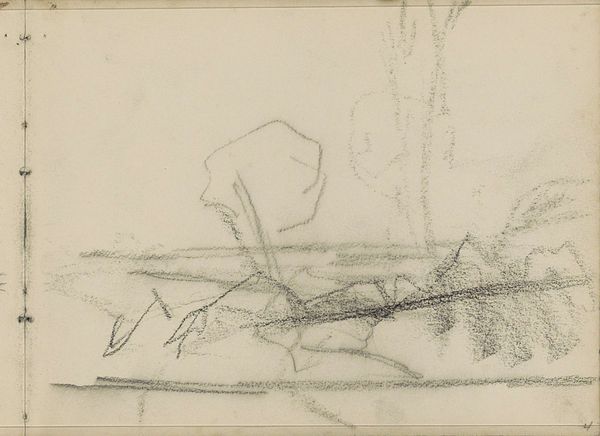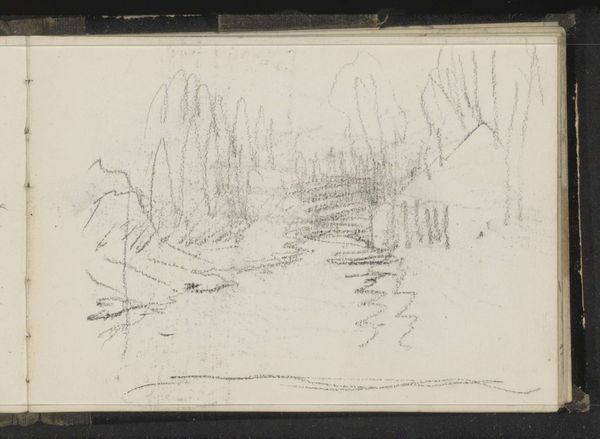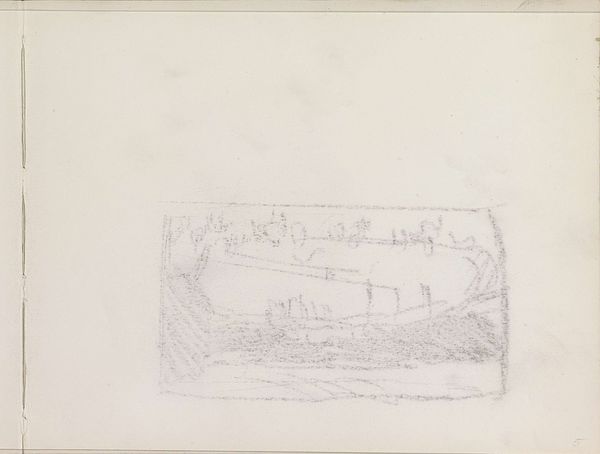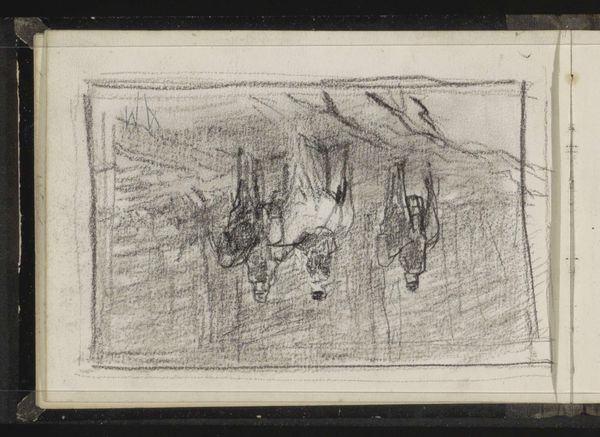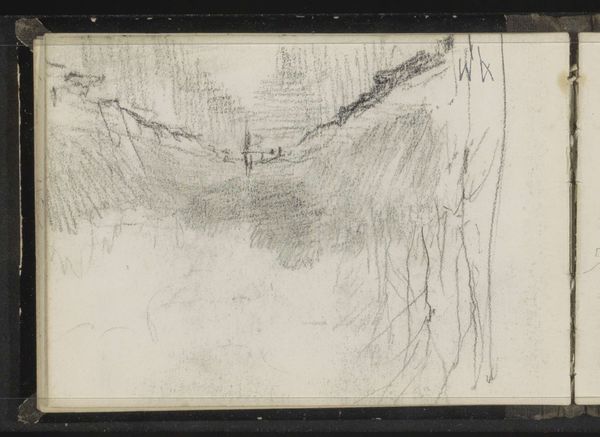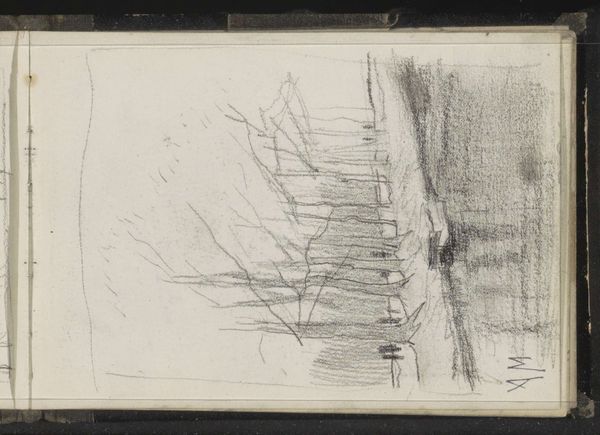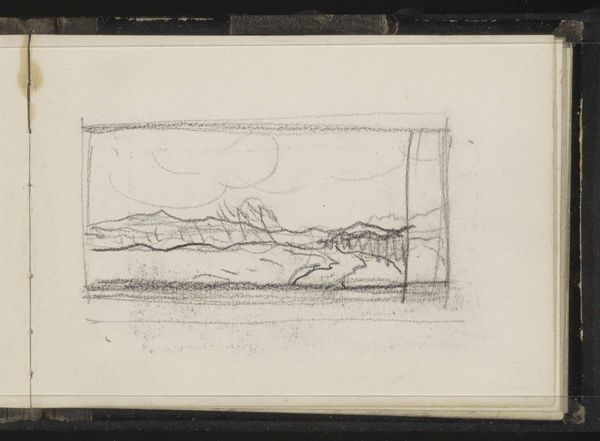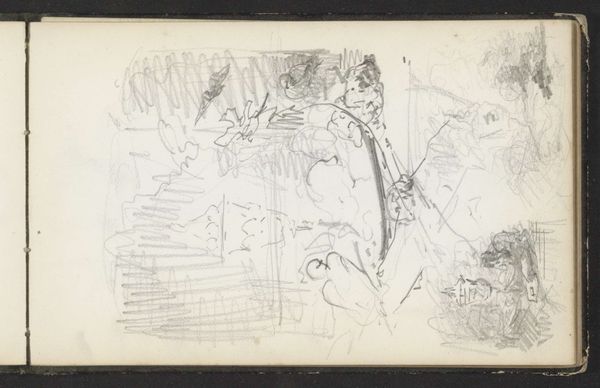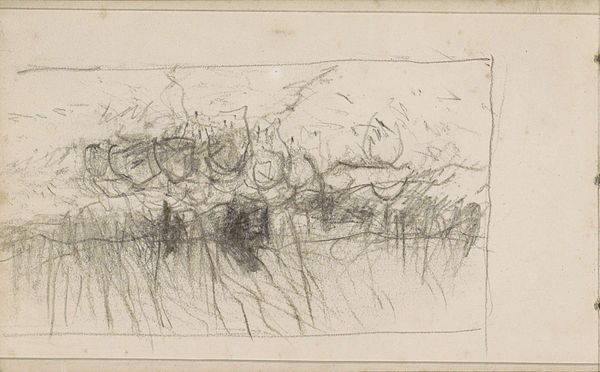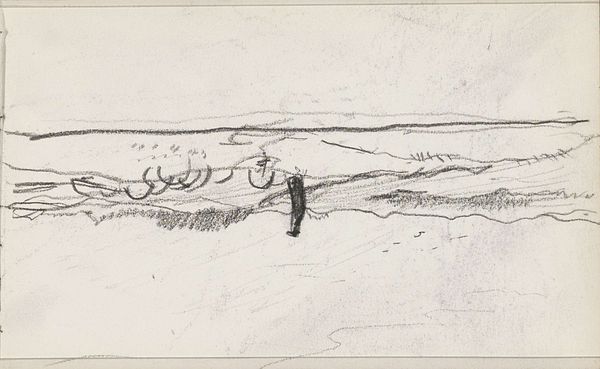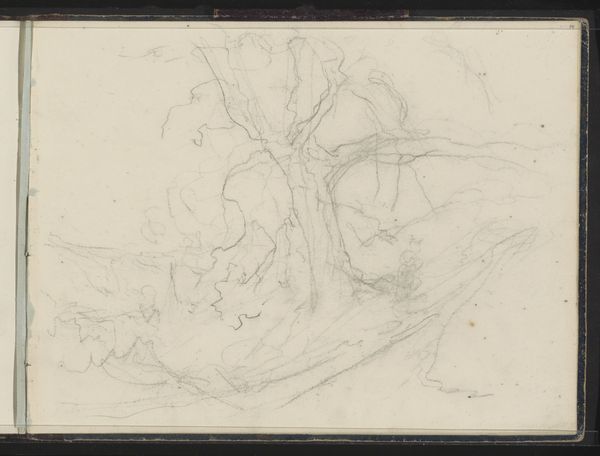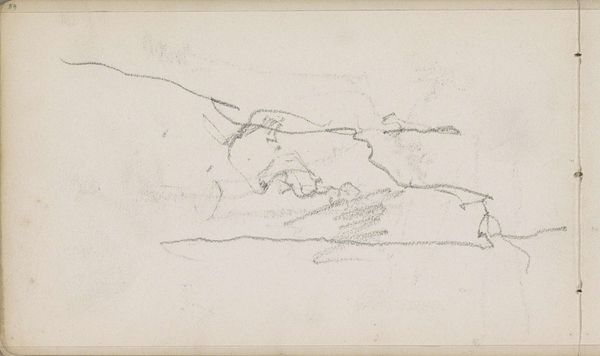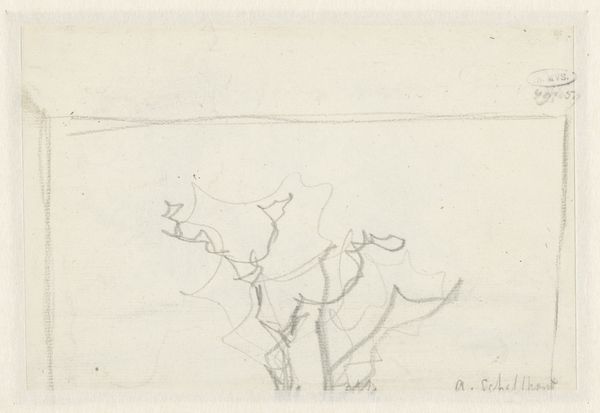
drawing, graphite
#
drawing
#
impressionism
#
landscape
#
graphite
#
realism
Copyright: Rijks Museum: Open Domain
Editor: Here we have Anton Mauve's "Heuvellandschap," a landscape drawing rendered in graphite, sometime between 1848 and 1888. The monochromatic palette and sketchy lines evoke a sense of quiet desolation. What do you see in this piece? Curator: I find the composition particularly striking. Notice how the horizon line, though seemingly simple, is actually constructed through a layering of loosely defined forms. The pressure and directionality of the graphite strokes vary to build a sense of depth. It invites a careful reading of its formal relationships: the stark contrast between the dense foreground and the barely-there suggestion of a sky creates a fascinating tension. Editor: That makes sense. I was focusing on the overall image but now I see it in those layers you are mentioning. It looks almost unfinished... Curator: Precisely. One might say its “unfinished” quality reveals Mauve's process of translating observed reality into artistic form. It calls into question our very notion of finish. How does this apparent lack of completion affect your interpretation of the piece? Editor: It gives the drawing an immediacy; I see the artist's hand, the act of creation itself, perhaps more vividly. But isn’t this landscape also tinged with Romantic ideals, with the ‘sublime’? Curator: While the landscape might invoke romanticism, I'm drawn more to how it adheres to—or perhaps subtly departs from—the conventions of realism through purely formal devices, like its strategic use of line, value and shape. Editor: Interesting. I hadn’t thought of approaching it quite that way, separating form so distinctly from any possible content. Curator: A close consideration of its construction invites us to a new form of appreciation. It encourages us to ask more fundamental questions. Editor: Thanks. That helps me see the power of formal analysis.
Comments
No comments
Be the first to comment and join the conversation on the ultimate creative platform.
